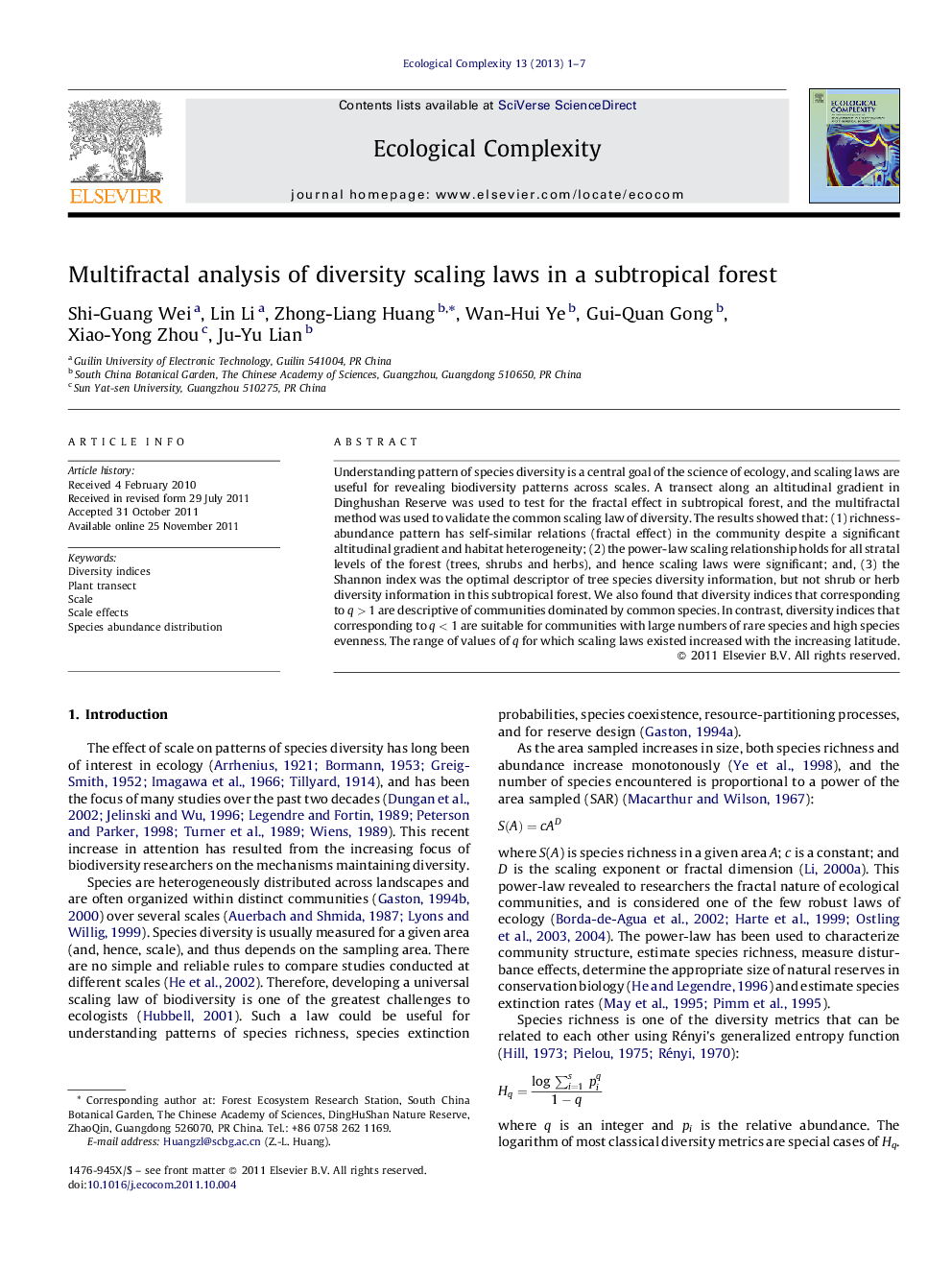| Article ID | Journal | Published Year | Pages | File Type |
|---|---|---|---|---|
| 4372477 | Ecological Complexity | 2013 | 7 Pages |
Understanding pattern of species diversity is a central goal of the science of ecology, and scaling laws are useful for revealing biodiversity patterns across scales. A transect along an altitudinal gradient in Dinghushan Reserve was used to test for the fractal effect in subtropical forest, and the multifractal method was used to validate the common scaling law of diversity. The results showed that: (1) richness-abundance pattern has self-similar relations (fractal effect) in the community despite a significant altitudinal gradient and habitat heterogeneity; (2) the power-law scaling relationship holds for all stratal levels of the forest (trees, shrubs and herbs), and hence scaling laws were significant; and, (3) the Shannon index was the optimal descriptor of tree species diversity information, but not shrub or herb diversity information in this subtropical forest. We also found that diversity indices that corresponding to q > 1 are descriptive of communities dominated by common species. In contrast, diversity indices that corresponding to q < 1 are suitable for communities with large numbers of rare species and high species evenness. The range of values of q for which scaling laws existed increased with the increasing latitude.
